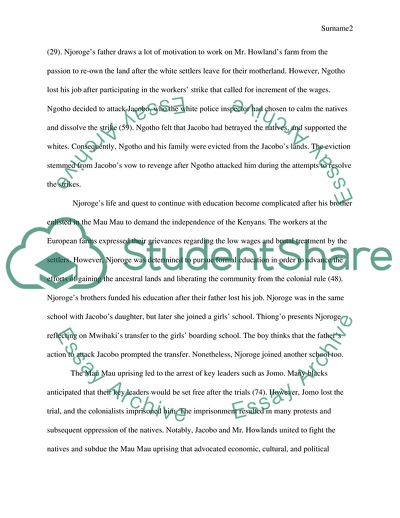Cite this document
(Weep Not, Child by Thiongo Book Report/Review Example | Topics and Well Written Essays - 1500 words, n.d.)
Weep Not, Child by Thiongo Book Report/Review Example | Topics and Well Written Essays - 1500 words. https://studentshare.org/history/1849414-summerize-and-talk-about-the-book
Weep Not, Child by Thiongo Book Report/Review Example | Topics and Well Written Essays - 1500 words. https://studentshare.org/history/1849414-summerize-and-talk-about-the-book
(Weep Not, Child by Thiongo Book Report/Review Example | Topics and Well Written Essays - 1500 Words)
Weep Not, Child by Thiongo Book Report/Review Example | Topics and Well Written Essays - 1500 Words. https://studentshare.org/history/1849414-summerize-and-talk-about-the-book.
Weep Not, Child by Thiongo Book Report/Review Example | Topics and Well Written Essays - 1500 Words. https://studentshare.org/history/1849414-summerize-and-talk-about-the-book.
“Weep Not, Child by Thiongo Book Report/Review Example | Topics and Well Written Essays - 1500 Words”. https://studentshare.org/history/1849414-summerize-and-talk-about-the-book.


